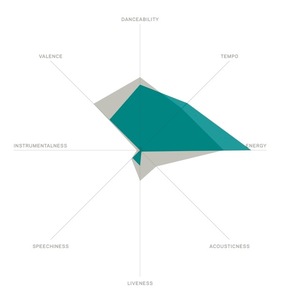- in Production by Bobby Owsinski
Here’s What Makes A Song A Hit
 Every artist, band, songwriter, producer and label has the same question. What makes a song a hit? People who can predict hits have been handsomely paid by the industry for decades, but that quality is elusive and fleeting even for the best of them. Now 2 college researchers have analyzed 60 years of #1 hits to find out what makes them golden the eyes of the public.
Every artist, band, songwriter, producer and label has the same question. What makes a song a hit? People who can predict hits have been handsomely paid by the industry for decades, but that quality is elusive and fleeting even for the best of them. Now 2 college researchers have analyzed 60 years of #1 hits to find out what makes them golden the eyes of the public.
In their paper “What Makes Popular Culture Popular? Product Features and Optimal Differentiation in Music,” professors Michael Mauskapf of Columbia Business School and Noah Askin of INSEAD analyzed 60 years worth of tracks from the Billboard Hot 100. What they found is not what you’d expect, as songs that top the charts tend to be less similar to their predecessors. Different is better, it seems, but only to a point.
According to the paper, “Breakout songs — those that reach the very top of the charts — simultaneously conform to prevailing musical feature profiles while exhibiting some degree of individuality or novelty. They sound similar to whatever else is popular at the time, but also have enough of a unique sound to help them stand out as distinctive.”
They concluded something that everyone with experience in the business knew intuitively. The researchers determined that, “What that suggests is that a hit song, or any other cultural product – like a film, or a novel — can’t simply be reverse engineered from what’s been popular in the past. Popular success really is more art than science.”
Mauskapt and Askin measured every chart topper for the following characteristics:
• Danceablity – a measure of how suitable a song is to dance to.
• Tempo – the speed of the song.
• Energy – a measure of a track’s “intensity.”
• Acousticness – how likely the algorithm thinks it is that this song was recorded acoustically without electronic instruments or effects.
• Liveness – how likely the algorithm thinks it is that this song was recorded live.
• Speechiness -a measure of the amount of spoken-word (as opposed to singing) in the track.
• Instrumentalness – the estimated likelihood that this is an instrumental track.
• Valence – represents the “positiveness” of the track (Is it likely to make you happy?).
While all this might seem a little too academic, the best part of the paper is the interactive map that shows the combination of the above characteristics on a number of hits from 1958 to 2018. You can even overlay different songs from different eras to see how they compare.
I’m not sure how useful this info is to future hit-makers, but it sure is fun. Give it a try.

